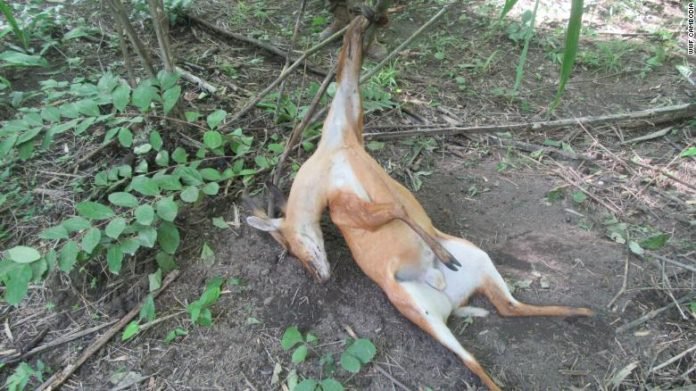Across Southeast Asia, wild animals are being hunted out of existence to feed the growing demand for bushmeat, according to conservationists.
The toll of snaring on many species across the region has been devastating. The saola, a mysterious antelope-like animal that was only discovered by scientists in 1992, is on the brink of extinction — it has fallen victim to snares despite not being a target species, says Gray.
The dhole — a tawny-colored wild dog — is also highly endangered. “There are probably fewer dholes left than tigers,” says Gray, ‘but they don’t get the same level of attention.”
Dholes are especially susceptible to being caught in snares, he says, because they roam over large distances in search of pigs and deer which are, themselves, becoming increasingly rare because of snaring.
Gray says dholes are thought to be extinct in Vietnam and are likely to become extinct in Laos. “There is still a decent population in Cambodia, but if we don’t solve the snaring crisis, they will go too.”
Changing behavior
Wildlife Alliance operates a team of 110 rangers who work “24/7” removing snares from the Cardamom rainforest in western Cambodia , says Gray.
In 2018 alone, the team, working in partnership with the Cambodian Ministry of Environment, removed 20,000 snares and destroyed 779 illegal forest camps — structures built inside protected areas where poachers sleep and store equipment and animal carcasses.
Rescued creatures are cared for at the Phnom Tamao Wildlife Rescue Centre, which houses more than 1,400 animals — some of which are released in safe areas and some of which stay there for the rest of their lives, depending on the severity of their injuries.
This work is vital, but it’s not nearly enough, says Gray.












